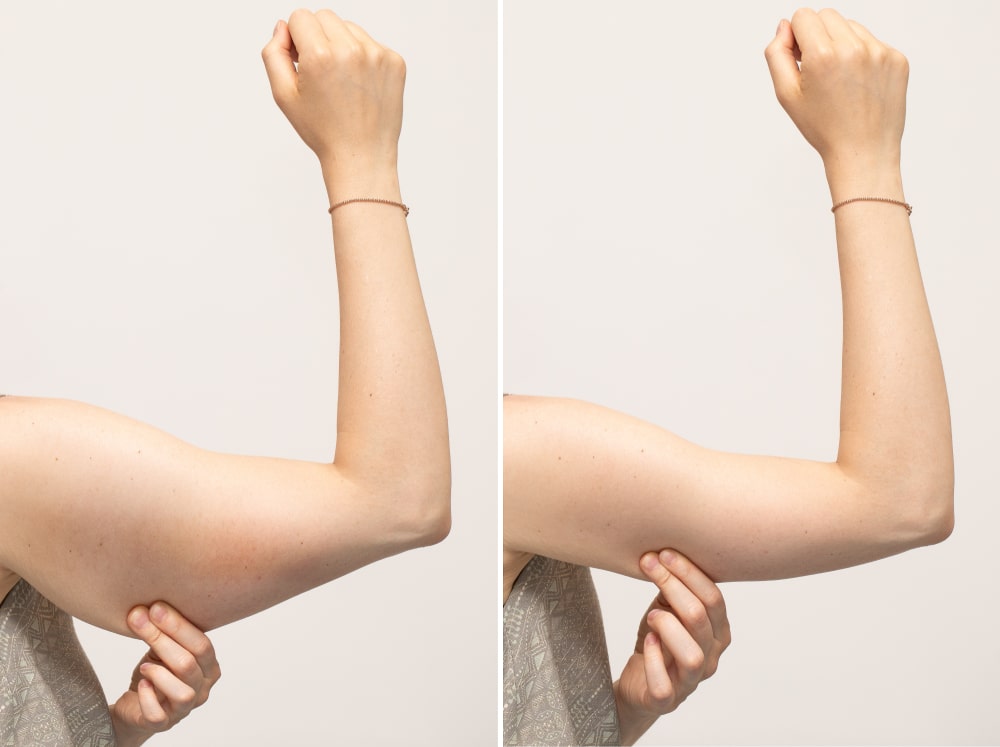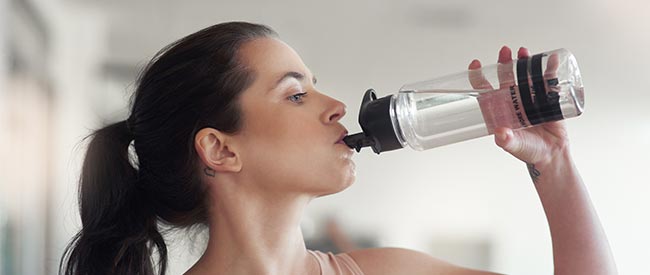Ever wondered what it really takes to recover from arm liposuction? You’re not alone. Arm lipo is one of the most effective ways to sculpt and slim down the upper arms, but like any cosmetic procedure, recovery plays a huge role in achieving great results.
The good news? Recovery from arm lipo is usually quicker and easier than many expect—especially when you’re prepared. Whether you’re planning for a big event or just eager to feel confident in sleeveless tops again, here’s everything you need to know to ensure a smooth, stress-free healing process.

How long is recovery for arm lipo?
Most patients feel well enough to return to light activities and even go back to work within 3 to 7 days after arm liposuction. Bruising and swelling typically subside significantly by the end of the first week. However, it’s essential to continue wearing compression garments as directed to aid in healing. Full recovery—meaning no swelling, bruising, or restrictions on intense exercise—can take between 4 to 6 weeks, depending on your body and how closely you follow post-op instructions. With a clear understanding of what to expect, let’s walk through your recovery journey step by step.
Day-by-Day Arm Liposuction Recovery Timeline
Everyone’s recovery is unique, but most patients follow a similar general timeline after arm liposuction. Knowing what to expect at each stage can help you plan ahead and feel more confident as you heal. Below, we break down the recovery process day by day, so you can prepare for what’s to come and recognize which symptoms are normal—and which ones may require a call to your surgeon.
The Critical First 24 Hours
The first 24 hours after arm liposuction are all about getting plenty of rest to ensure proper healing. You’ll likely feel groggy from anesthesia and may experience soreness, swelling, and fluid drainage. Your surgeon will have fitted you with a compression garment—keep it on, removing it only to shower if instructed. Have someone drive you home and stay with you overnight. Keep your arms elevated on pillows to reduce swelling, stay hydrated, and eat light, nutritious meals. Follow your surgeon’s pain management plan and call if you notice signs of infection or severe discomfort.
Day 1 After Surgery
Early Healing and Adjustments
As the discomfort from the initial recovery period begins to fade, you’ll likely notice a decrease in pain and swelling. Continue wearing your compression garment full-time to support healing and skin retraction. Showering is usually allowed 24–48 hours after surgery, but avoid soaking the area. Gently clean the incisions as instructed—no scrubbing or picking. Begin taking short walks to promote circulation, but avoid lifting, reaching, or vigorous movement. Attend your follow-up appointment during this time, and discuss any questions or concerns with your surgeon. Some people return to work by day five, while others take a full week to rest.
Days 2-5
Getting Back on Your Feet
By the end of the first week, most patients feel significantly better and may resume light daily activities. Bruising and swelling are still present but should be improving. Continue wearing your compression garment as directed, and avoid lifting or overusing your arms. You might have your stitches removed around days 7–10 unless they’re dissolvable. While the results of your arm lipo may start to show, final contouring will take more time. Keep your arms elevated when resting, stay hydrated, and continue short walks to support circulation and healing.
First Week
Visible Progress with Caution
As you enter the second and third weeks after surgery, swelling and bruising should continue to improve. You may feel more like yourself, but it’s still essential to take it slow. Continue wearing your compression garment most of the day, with short breaks if permitted. Stitches, if not dissolvable, are typically removed around this time. Light walking is encouraged, but strenuous exercise should still be avoided. You may be able to return to work if your job isn’t physically demanding. Follow all post-op care instructions to maintain your progress and avoid complications.
Weeks 2-3
Feeling Normal Again
By the end of the first month, many patients feel close to normal and may resume most daily activities. Light exercise can usually be reintroduced, but avoid high-impact or intense workouts or lifting heavy objects unless your surgeon gives the all-clear. Swelling and bruising should continue to fade, and your arms will begin to reveal a more defined shape. You may stop wearing the compression garment during the day but continue wearing it at night for added support. Be patient—your final results are still developing, and consistency with aftercare is key to long-term success.
First Month
Final Refinement and Results
During months two to six, your arms will continue to refine and settle into their final shape. Swelling should be minimal or gone entirely, though you may still notice minor fluctuations with activity or warm weather. Most patients can safely resume all types of exercise, including weightlifting and high-impact workouts, by this point. Numbness may persist in some areas as nerves regenerate. Scars will continue to fade and should be protected from the sun to prevent darkening. Maintaining a healthy lifestyle and stable weight is key to preserving your long-term results.
Months 2-6
SPECIALIST CARE YOU CAN TRUST
You can trust the entire staff to help make your visit as comfortable and safe as possible!
Arm Lipo Post-Operative Care: Essential Tips
Recovery from arm liposuction doesn’t stop after the procedure—it continues at home with how well you care for yourself. Following your surgeon’s post-operative instructions and adopting good habits during recovery can make a significant difference in your comfort, healing speed, and overall results. Below are essential care tips to help you stay on track and feel your best throughout the arm liposuction healing process.

Stay Hydrated
Drinking plenty of water is one of the simplest yet most powerful ways to support a successful arm lipo recovery. Staying hydrated helps reduce swelling, flushes out anesthesia-related toxins, and supports tissue repair. Aim to drink at least 8–10 glasses of water per day, and limit caffeine or sugary drinks that can dehydrate you. Proper hydration also helps maintain healthy skin elasticity, which is essential for smooth, even results after arm liposuction.

Keep incisions clean and dry
Keeping your incision sites clean and dry helps prevent infection and promotes faster healing. You can usually begin showering within 24–48 hours post-op, but avoid soaking in baths, pools, or hot tubs until your surgeon says it’s safe. Gently pat the area dry with a clean towel—never rub. Follow any instructions for applying antibiotic ointments or dressings, and avoid picking at scabs or peeling skin. Proper hygiene during this period plays a big role in minimizing scarring and supporting your body’s natural healing process.

Eat a Healthy Diet
Your body needs the right nutrients to repair tissues and reduce inflammation after surgery. Focus on eating whole, nutrient-dense foods like fruits, vegetables, lean proteins, and whole grains. Avoid overly processed foods, salty snacks, and added sugars, which can worsen swelling and delay healing. Protein is especially important for tissue repair, so include it in every meal. A balanced, healthy diet can also improve your energy levels and help you maintain the results of your arm liposuction long-term.

Include gentle exercises
Incorporating gentle movement into your routine helps improve circulation and reduce the risk of complications like blood clots. Start with light walking as soon as your surgeon allows—usually within the first few days. Avoid rushing into exercise; your body needs time to heal. Wait until you’re in the appropriate stage of recovery before introducing stretching or strength training. Always follow your surgeon’s guidance, and ease back into your normal activity level gradually. Overexerting too soon can delay healing or compromise your results.

Wear Compression Garments
Compression garments are crucial for reducing swelling, improving circulation, and helping your skin conform smoothly to your new contours. Wear your garment exactly as your surgeon instructs—typically full-time for the first few weeks, then gradually tapering off. Avoid removing it early, even if you start to feel better. Consistent use supports better results and a quicker, more comfortable recovery time. Make sure the garment fits properly and isn’t too tight, as this can restrict blood flow or cause irritation around your incisions.

Follow Pre-Op Instructions
Recovery actually starts before surgery. Closely following your surgeon’s pre-op instructions can lead to a smooth healing process and quick recovery time. This might include stopping certain medications, avoiding smoking, and fasting before your procedure. Proper preparation sets the stage for fewer complications and more predictable results. Don’t hesitate to ask questions during your pre-op appointments—understanding the guidelines ensures you’re fully ready and gives your body the best chance at a successful recovery and outcome.
Choose a Qualified Surgeon
The expertise of your surgeon directly impacts your arm lipo experience and results. A qualified, board-certified plastic surgeon ensures that your procedure is performed safely, with surgical techniques that minimize trauma and support a smoother recovery. They’ll also provide personalized post-op guidance tailored to your body and goals. Never underestimate the importance of training, credentials, and patient reviews.
How to Choose a Qualified Arm Lipo Surgeon
Finding the right plastic surgeon is essential for both your safety and the quality of your results. A well-qualified surgeon will not only perform the procedure with precision, but also guide you through the recovery phase with professional care and attention. Here are key things to look for when choosing a surgeon for your arm liposuction:
- Board certification in plastic surgery
- Extensive experience with liposuction and body contouring procedures
- Proven track record of patient satisfaction and before-and-after results
- Up-to-date certifications in patient safety, such as ACLS
- A welcoming, transparent consultation process
- Customized treatment plans tailored to your goals
At Aesthetic Surgical Images in Omaha, our team is composed of four board-certified plastic surgeons, each bringing a unique set of skills to the table. Our surgeons are Advanced Cardiac Life Support (ACLS) certified, ensuring the highest level of patient safety. Their collaborative approach allows us to deliver consistently outstanding outcomes for procedures like arm liposuction. Ready to take the next step? Call us at 402-390-0100 or visit our contact page to schedule a consultation.
